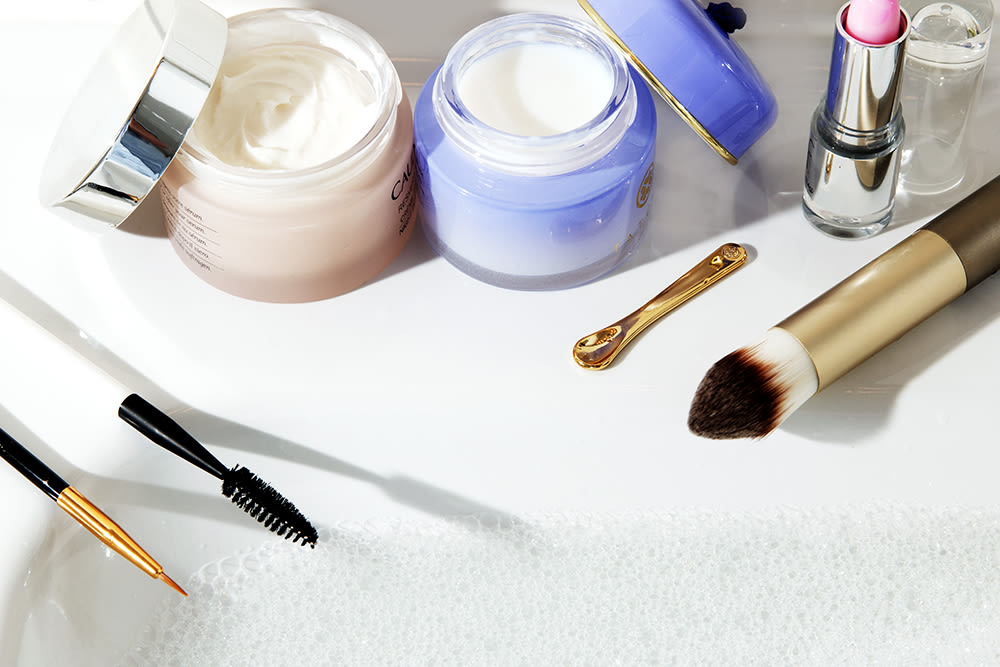If the beauty industry had its own horror film, it might go something like this: A pretty girl walks into her bathroom, scoops out some moisturizer with her fingers, and applies it to her face. When she walks away, a minefield of flesh-eating bacteria begins to fester in her moisturizer jar. The next day, when she applies her moisturizer again, her skin is literally eaten alive by the bacteria, all because she dipped her grubby hands into the jar.
The moral of the story? Don’t touch your cosmetics. It’s hygiene advice that seems timeless, sort of like “wash your hands after you use the restroom.” But so many things come in jars—and who can keep track of those mini spoons?
A researcher named Elizabeth Brooks wanted to know too. Her two-year study, presented in 2004, took cultures from tester bottles in department stores to see what was growing inside. Ready for it? (Sit down.) She found staph, strep, and E. coli bacteria growing inside most of them. When she tested the samples on Saturdays, the day department stores have the highest foot traffic, the contamination rate was 100 percent. Every. Single. Bottle was contaminated with some kind of bacteria.
In another study, published by the International Journal of Cosmetic Sciences, two Brazilian universities tested 40 mascara samples from women and found that 79 percent were contaminated with staph.
So, maybe stay away from testers. But public contamination is very different from private contamination. Who knows what people browsing through Sephora have touched pre-entering Sephora? Most likely lots of not-clean things.
In your own bathroom, you have a lot of control over what grows in your products, according to John F. Krowka, a senior microbiologist with the Personal Care Products Council, a trade organization that monitors the safety and health of personal care products. And as long as you’re following common sense hygiene rules, he says you should be fine: “Wash hands before applying cosmetics, close cases or jars after use, read cosmetic labels carefully and replace as directed, replace applicators frequently, or use disposable makeup applicators.”
Krowka added that most cosmetics use preservative ingredients as a safeguard against bacterial growth. Among the most common preservatives are parabens, which are effective in keeping bacteria, yeast, and fungus at bay. (Plus, they’re really not as dangerous as people tend to think—for an explainer, see here.) If you’re using a homemade or ultra-natural product without preservatives, you have less of a shelf life before the product could become a breeding ground for bacteria.
Big lesson to learn here: Check the product’s expiration date. Also good to do: sterilize brushes, sponges, and cloths after each use.
When in doubt, save the tiny spoon! Dr. Annie Chiu, a dermatologist with The Derm Institute, confers, since dipping your fingers in product and exposing it to the air ups the likelihood of contamination.
Alternatively: opt for products that come in tubes or an airless pump. You can also buy your own airless pump and transfer your favorite jar products. Sounds like a great weekend project.
—Arielle Pardes
Know your products better with this handy guide to sulfates.

